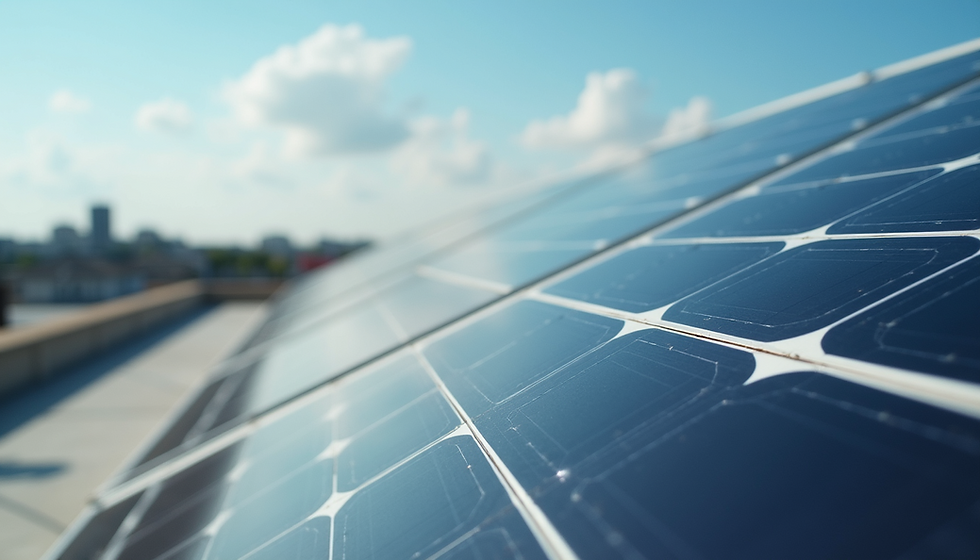Wind Turbines of Tomorrow – Design, Materials, and Efficiency Improvements
- Sankalp Agrawal

- May 10
- 3 min read
Updated: May 10
As the world accelerates its transition toward renewable energy, wind power has emerged as a leading solution in the quest to reduce greenhouse gas emissions and build a sustainable future. Wind energy is clean, abundant, and increasingly cost-effective. However, current wind turbine technology still faces challenges related to efficiency, material durability, and environmental impact. To address these limitations and unlock the full potential of wind power, researchers and engineers are developing the wind turbines of tomorrow—systems that are smarter, lighter, more powerful, and environmentally responsible.
Understanding the principles behind wind turbines is essential. Wind energy is harnessed through large blades that capture the kinetic energy of moving air. This energy turns a rotor connected to a generator, producing electricity. The amount of energy a turbine can generate depends on several factors including wind speed, blade size, turbine height, and the efficiency of its internal components. Enhancing each of these variables can significantly improve the overall performance of the turbine.

One of the primary areas of innovation in wind turbines lies in the design of rotor blades. Traditional blades, while effective, are gradually being replaced with longer, more aerodynamic versions that can capture more energy even at lower wind speeds. Inspired by biomimicry, some next-generation blades are modeled after the silent flight of owls or the tubercles on humpback whale fins. These biologically inspired designs reduce noise and turbulence, which is particularly beneficial for installations in urban or offshore environments where space and noise are critical considerations.
Advancements in materials are also pushing wind technology forward. Most modern turbine blades are made of fiberglass-reinforced plastics, which are durable and lightweight but difficult to recycle. Researchers are now developing new materials such as recyclable thermoplastics and carbon fiber composites. These offer higher strength-to-weight ratios and enable the creation of longer blades without adding stress to the turbine's overall structure. The result is a more efficient turbine with a reduced environmental footprint.
Beyond the physical components, digital technologies are revolutionizing turbine operations. Smart wind turbines equipped with sensors and IoT (Internet of Things) systems can monitor conditions in real-time, adjusting blade pitch and yaw for optimal efficiency. Machine learning algorithms analyze this data to predict maintenance needs before failures occur, reducing downtime and extending the life of each turbine. Additionally, networked wind farms can optimize collective output by minimizing wake effects, which occur when one turbine's airflow disrupts another's performance.
Floating wind turbines represent a groundbreaking leap in wind technology. Unlike traditional offshore turbines that require fixed foundations, floating models are anchored with mooring lines and can be positioned in much deeper waters where wind resources are more reliable. This opens up vast new areas for energy generation, especially in coastal regions with limited shallow waters. Pilot projects in Norway, the UK, and Japan have demonstrated the technical feasibility of floating wind farms, showing promising results in both performance and environmental compatibility.
However, as wind energy capacity increases, it is crucial to address ecological and social considerations. Wind turbines can pose risks to wildlife, particularly birds and bats. New mitigation technologies, such as radar-based systems that temporarily shut down turbines when flocks are detected, are being developed to minimize harm. Equally important is engaging with local communities during the planning and installation phases. Transparent communication and collaborative decision-making help ensure that wind projects are both effective and socially accepted.

Policy support and industry collaboration are key to driving innovation in wind energy. Government initiatives such as the U.S. Department of Energy’s Wind Vision Initiative and the European Union’s Green Deal provide funding and regulatory support for research and development. Major companies like Vestas, Siemens Gamesa, and GE Renewable Energy are at the forefront of bringing these innovations to market, continually refining turbine design and expanding global capacity.
The wind turbines of tomorrow promise to be smarter, more efficient, and more environmentally friendly. As technology advances and the economics of wind power continue to improve, wind energy is set to play a central role in the decarbonization of the global energy system. The future is quite literally blowing in the right direction.






Comments